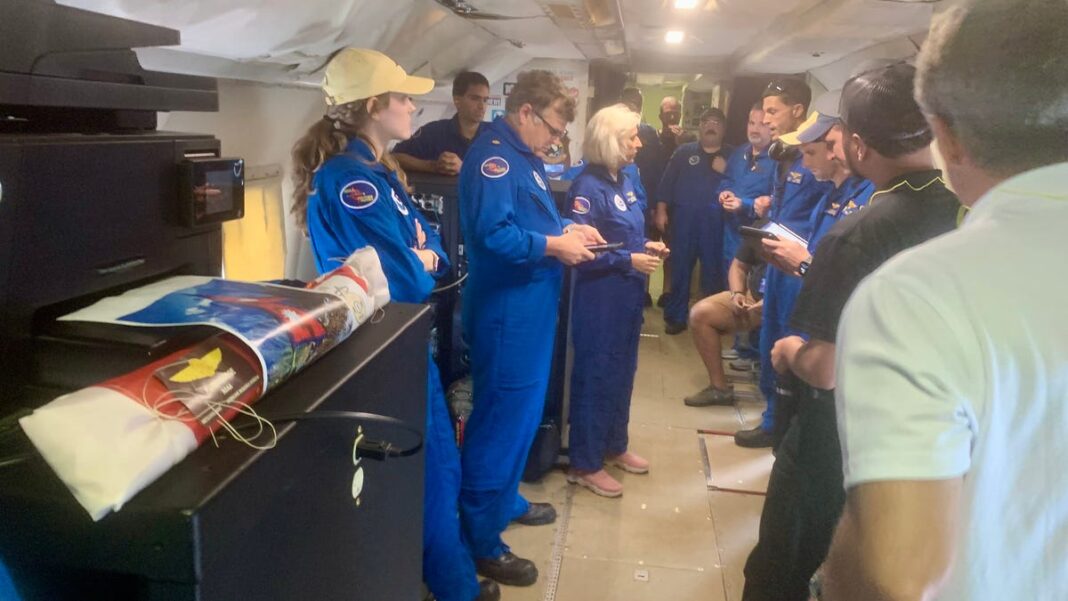Peter Dodge’s Perpetual Journey: Celebrated Hurricane Scientist’s Ashes Scatter in Hurricane Milton’s Eye
The esteemed hurricane expert, Peter Dodge, passed away knowing he had taken his final journey through a significant hurricane this week.
This Tuesday, NOAA meteorologists performed what they referred to as a “burial at sea,” scattering Dodge’s ashes into the eye of Hurricane Milton, which is poised to wreak havoc on Florida after making landfall late Wednesday.
Throughout his distinguished career, Dodge participated in numerous hurricane missions, allowing scientists to record critical data such as air pressure, ocean wave height, wind velocity, and other essential metrics, thus helping the public better understand and prepare for storms. Typically, a hurricane flight involves multiple entries through the storm’s eye, explained Jeff Masters, a meteorologist. Dodge accomplished 386 such “eye penetrations,” a term he coined.
“He successfully navigated 386 eye penetrations during his lifetime, and his 387th occurred last night,” Masters noted.
Dodge, who had a talent for mathematics and an extensive background in hurricane analysis, was an inquisitive individual with a passion for diverse subjects beyond science, as shared by his colleagues.
Peter Dodge passed away at 72 due to a stroke in 2023, his sister Shelley Dodge revealed to YSL News.
For the majority of his career, Dodge worked as a radar scientist at NOAA’s Atlantic Oceanographic and Meteorological Laboratory in Florida. He also volunteered with the Peace Corps in Nepal during the 1970s.
Masters reported that this was only the fourth occasion since the 1970s in which a meteorologist’s ashes have been released into a hurricane’s eye.
Dodge’s Final Voyage through Milton
NOAA scientists, often called “hurricane hunters,” held an honoring ceremony for Dodge’s remains during the Tuesday mission that took them into the eye of Hurricane Milton, which lasted just one minute. This duration was around three to four minutes shorter than usual due to the storm’s immense scale and compact eye, according to Kathryn Sellwood, who collaborated with Dodge and helped scatter his ashes.
“The flight was particularly busy as we dealt with a very intense hurricane, which is expected to hit an area with a significant impact,” Sellwood shared with YSL News.
According to Shelley Dodge, her brother developed an eye disease later in life that limited his ability to participate in hurricane missions towards the end of his career. Now, she said, he finally embarked on that ultimate journey.
“They honored him because he always dreamt of returning to the cockpit,” Shelley Dodge, an attorney from Longmont, Colorado, remarked.
Due to Dodge’s cherished status at NOAA, many of his coworkers were present at his bedside when he passed. Those who chase storms began organizing his final flight the day he died in March 2023, according to his sister, Shelley Dodge.
“People loved him, and one individual approached me and said, ‘We will ensure he has his last flight,'” Shelley recounted with tears in her eyes.
‘He had remarkable knowledge of hurricanes’
For more than 40 years, Dodge dedicated his government career to studying the behavior of rain cells within hurricanes, as shared by his sister.
“He had a profound understanding of hurricanes, perhaps as well as anyone else living,” Masters noted to YSL News.
Masters recounted a pivotal scientific expedition with Dodge during Hurricane Hugo in 1989, where mechanical failures put their safety in jeopardy.
On Tuesday night, approximately 300 miles southwest of Florida, a scientific team of 20 members released a drop sonde—a cylindrical device—into Hurricane Milton’s eye after reciting a poem called “Peace, my heart” by Rabindranath Tagore.
“A line from the poem resonated deeply with everyone: ‘Let the flight through the sky end with folding of wings over the nest,'” recalled Sellwood as she read from a folded copy of the poem.
For Shelley Dodge, this tribute was a fitting honor for her brother.
“That aspect of his work brought him immense joy and was often the topic of his conversations,” she said. “What happened yesterday was beautiful; they ensured he was dropped straight through the eye of the hurricane.”

